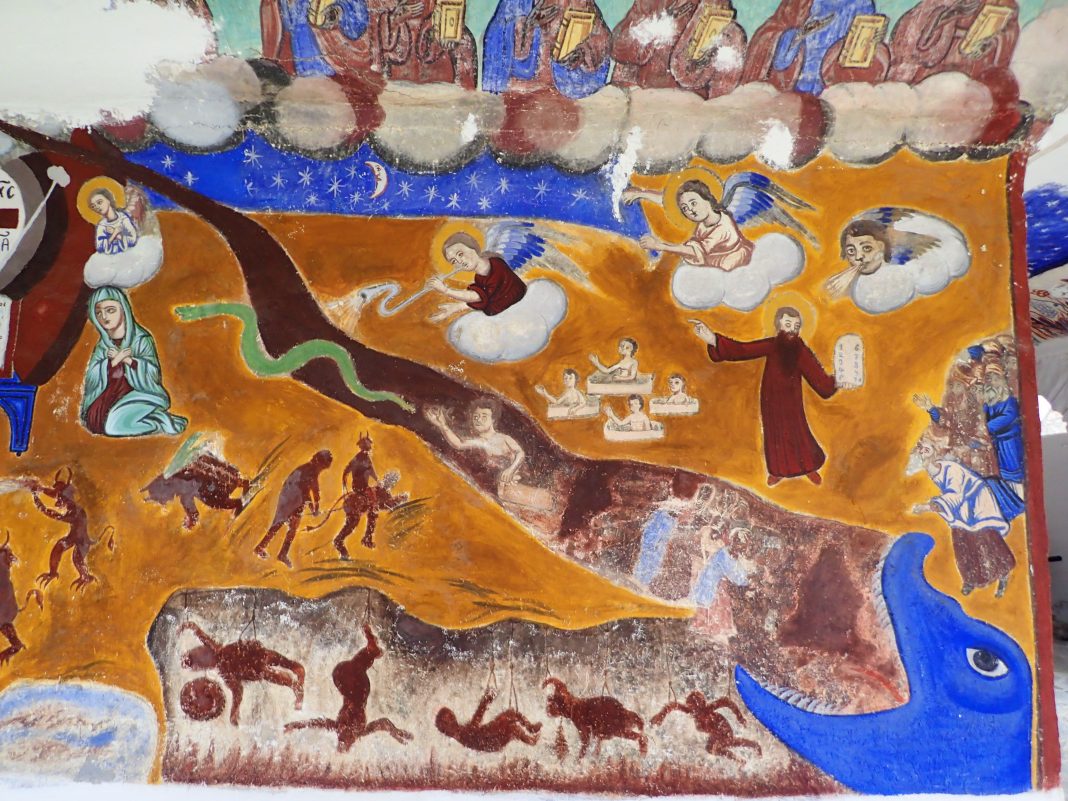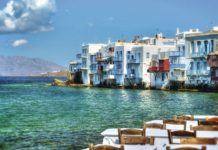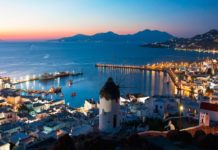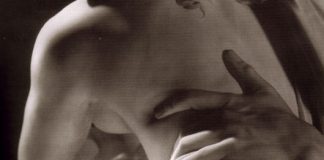Note- this post has some images of church frescoes you might find brutal and unnerving- I certainly did.
Table of Contents
Folkloric Beauty
Nothing has prepared me for entering the monastery of Archangel Mihail in the village of the same name high in the mountains of Almopeia. The outside is painted, unique to the churches we had visited, but in a style in keeping with the charming folkloric mood we had seen in other churches of the area on this marvelous trip.*
We go in- the mood turns from folkloric simplicity to unbridled abandon. Color everywhere, and passion with it, Our tour guide, Nikos Zacharakis, refers to the frescoes as naive, and truly they are- no individual characteristics distinguish one face from another human proportions oddly rendered, an approach to color and line that is exuberant and actually zany.
| Spirals on the columns are crooked and uneven- they lend liveliness and spontaneity. |
Then I see the frescoes on the outer walls. The scenes were shocking. Scenes of martyrdom in an Orthodox church are common, especially in the fore chambers. Often the martyrdom is not being enacted, but just alluded to- some arrows on the ground near a yet unharmed St. Sebastian, lions licking St. Ignatius. Even when the martyrdom is shown, it is never with the graphic zeal depicted here. I grew up with Buddhist God-parents, Jewish friends, and Catholic holidays. Also centuries of Catholic imagery- The Ecstasy of St. Teresa,
The martyrdom of St. Sebastian.
Fear
I’ve seen fantastic horrors of hell in Bosch paintings, graphic visceral death in Grunewald paintings. Nothing prepared me for the demented zeal of these images- Demons prying the soul from the mouth of an unrighteous man
in another, impassive depraved men cooperate with a huge saw
You’ll notice I’m not the only one who finds these upsetting. The faces of the soldiers and the demons have been scratched out, as well as the more gruesome evidence of harm.
I find it worrisome. Were I alone I would have left. Our host the monk arrives, and everyone gathers around for a prayer. Amidst the demented images, it’s not very comforting. I stay towards the back.
Only when we go back outside to examine the main fresco do I feel more at ease. It’s not the fresco- depicting our afterlife journey it is filled with demons and torture
Redemption
It’s the priest, wise, kind, and frankly looking a lot like Richard Gere (I take no credit for this observation- one of my travelling companions noticed). Rather than seeing the descent into hell, I see the possibility Pater Illarion shares that through our prayers here on earth, we better the lot of souls departed. Instead of damnation, potential. Then he draws our attention to the corners-
Angels are rolling out a scroll of the heavens themselves, glittering with stars, and where once was dread is now wonder.
Grace- Change your words, Change your Soul
He invites us to the reception hall to get to know us better- a personal encounter such as I have never had. He hears our ideas, and shares his own- a piece of wisdom so elegant in its directness and easily applied. It is simply that words have meaning, psychological meaning. Change your words, change your soul. He has eliminated the words “must/have to” from his vocabulary, replacing them with “want to,” in essence, replacing obligation with joy. Try it in your mind right now and see if it doesn’t make the day and its tasks a lot more agreeable. When I find myself burdened, I return to Pater Illarion’s advice, and I am the better for it.
He walks us to the Monastery’s gate
I wonder if his wisdom and kindness has made the frescoes somehow less frightening, and slip away from the group to check. It hasn’t. But if anything, their brutality sharpens the relevance of his wise and practical measures in pursuing Grace, and helping us to do so likewise, this week, and hopefully always. His inspiration has lasting relevance.









